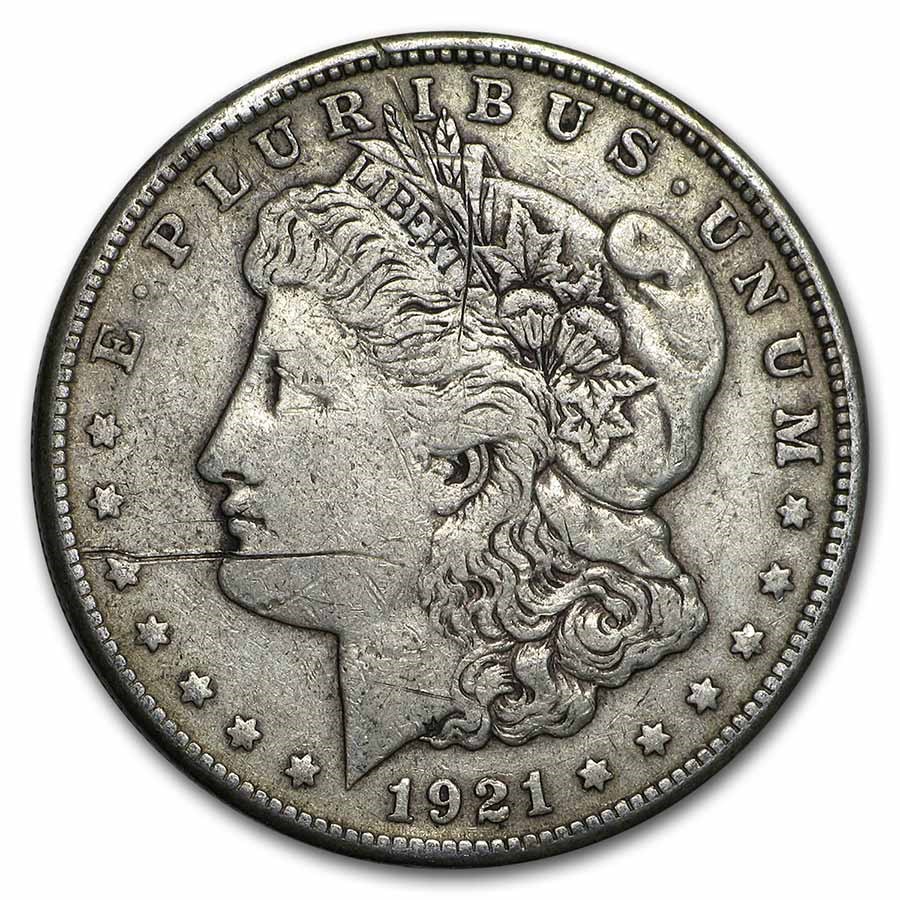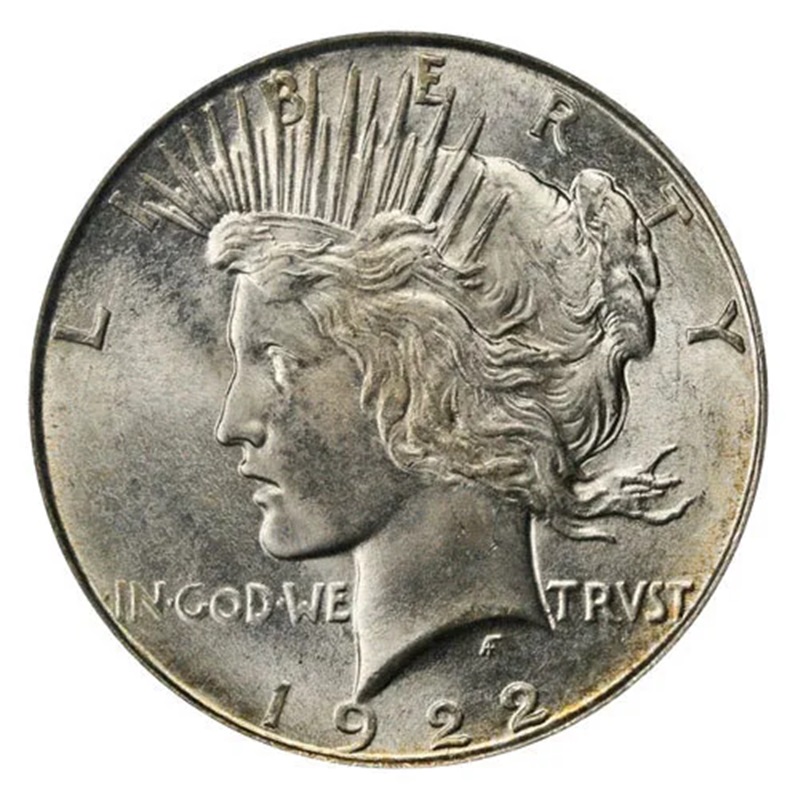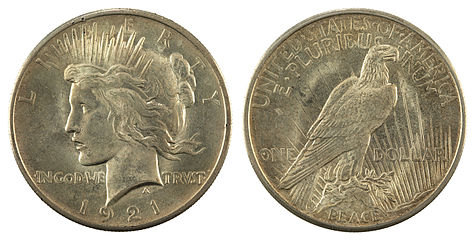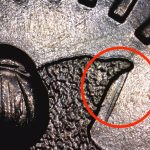The 1921 Morgan Silver Dollar has a significant place in numismatic history. This mintage year, the U.S. Mint restarted production of $1 coins following a 17-year hiatus.
This is the final year the Morgan $1 coins were issued for circulation since the Peace Dollar was introduced in the Fall of 1921.
What is the 1921 Morgan Silver Dollar?
The Morgan Silver Dollar is one of American numismatic history’s most iconic and widely collected coins. It was minted from 1878 to 1904 and then again in 1921.
First introduced in 1878, the Morgan Silver Dollar was created by Western mining companies lobbying Congress to stabilize the price of silver following the Civil War.
The Bland-Allison Act passed in 1878, required the U.S. Treasury to buy large quantities of silver for coinage. This was intended to support the silver mining industry and reintroduce silver currency.
The Morgan is often associated with the silver mining boom of the American West, and its design reflects the economic and political climate of the late 19th century. The debate between the gold standard and bimetallism was a central issue in American politics during this era.
1921 Morgan Silver Dollar Values
The 1921 mintage was large, and these coins are more common than earlier Morgans. However, they still hold a premium for collectors in uncirculated or higher-grade conditions.
| Condition | Description | Value Range |
|---|---|---|
| Good (G-4) | The coin will show significant wear and major design elements are present but heavily worn | $30 to $40 |
| Very Good (VG-8) | Moderate wear is visible, and the design details are clearer but still worn down | $35 to $45 |
| Fine (F-12) | More details on the coin’s design, such as the hair and feathers, are visible but still worn | $40 to $50 |
| Very Fine (VF-20 to VF-30) | Details such as Liberty’s hair and the eagle’s feathers are clearer, though still worn | $50 to $70 |
| Extremely Fine (EF-40) | Light wear is evident on the highest points of the coin, but overall, the details are sharp | $75 to $90 |
| Almost Uncirculated (AU-50 to AU-58) | These coins show only slight signs of wear on the highest points and maintain much of their original luster | $100 to $150 |
| Brilliant Uncirculated (BU) | BU coins show no signs of wear, retains its original mint luster, may have bag marks, dings or other minor imperfections | $150 and up |
Heavily worn or cull condition 1921 Morgan Silver Dollars generally hold little numismatic value and are typically priced at or near melt value. However, some exceptions include mint errors, clashed dies, off-center strikes, or doubled dies, where even a heavily worn or cull Morgan Dollar can fetch a premium.
1921 Morgan Silver Dollar Mintage Amounts
More than 86,730,000 Morgans were minted in 1921 across all US Mint locations.
| Location & Mint Mark | Mintage Amount | Notes |
|---|---|---|
| Philadelphia Mint (No Mint Mark) | 44,690,000 | The Philadelphia Mint produced the majority of the 1921 Morgan Dollars. |
| Denver Mint (D Mint Mark) | 20,345,000 | First time the Denver Mint produced Morgan Silver Dollars |
| San Francisco Mint (S Mint Mark) | 21,695,000 | Produced coins for circulation, in addition to the famous 1921-S Zerbe Proof |

Morgan Dollar Design
The coin was crafted by George T. Morgan, an English engraver who worked for the U.S. Mint. His skill is evident in the intricate details of Lady Liberty and the eagle.
Obverse
On the front of the coin, you’ll find a depiction of Lady Liberty wearing a Phrygian cap. Her hair is adorned with wheat and cotton.
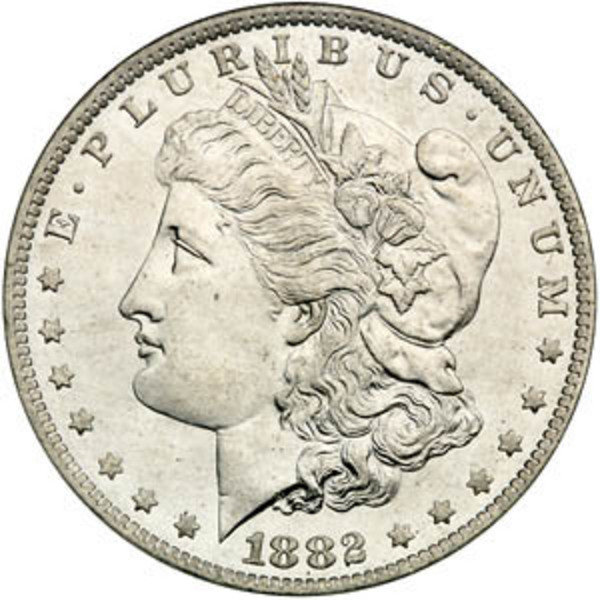
Above her head, the words “E PLURIBUS UNUM” (which means “Out of Many, One”) wrap around the edge of the coin along with thirteen stars, highlighting the unity of the original thirteen colonies.
Reverse

On the reverse, the Majestic bald eagle’s wings spread wide, symbolizing strength and freedom.
The eagle holds an olive branch in its right talon (for peace) and arrows in its left (to signify readiness for defense).
The Mintmark for coins minted outside of Philadelphia is located at the bottom of the reverse above the “D” and “O” in the word DOLLAR.
Inscriptions and Edge
The top edge of the reverse features the words “UNITED STATES OF AMERICA,” while the bottom proudly states “ONE DOLLAR,” making it clear what the coin is worth.
The edge of the 1921 Morgan Silver Dollar contains 189 reeds around the circumference.
Morgan Silver Dollar Designer
George Morgan was recruited to join the U.S. Mint in 1876 through the efforts of the then-director, Henry Linderman, who was seeking to revitalize American coinage.
Linderman recruited Morgan, who was working as an assistant engraver for the Royal Mint in London and offered him the opportunity to come to the United States.
Morgan accepted the offer and was hired as an “assistant engraver” under Chief Engraver William Barber.
One of Morgan’s first tasks was creating a new design for the silver dollar, marking the beginning of his long career. His fresh perspective and his European training allowed him to craft a coin that remains highly regarded among numismatists today.
Other Morgan Series Key Dates
In addition to the 1921 Morgan Silver Dollar, the Series offers many other valuable key dates due to their rarity, historical significance, or unique characteristics.
First Year of Issue – 1878 Morgan
This is the inaugural year for the Morgan Dollar, and it is highly collectible. Several varieties exist, including the 7 Tail Feathers and 8 Tail Feathers variations, which refer to the number of feathers on the eagle’s tail depicted on the reverse.
Scarce 1893-S Morgan Dollar
The 1893-S Morgan Dollar is considered the rarest and most valuable in the series. The San Francisco mint produced only 100,000, making it highly sought after in higher grades. The 1893-S Morgan Silver Dollar for $735,000 in 2018 was the highest-selling Morgan Silver Dollar ever auctioned.
1889-CC Morgan Dollar Carson City Mint
The 1889-CC is another rare coin minted at the Carson City Mint, which makes it especially desirable. The Carson City mint is known for producing some of the most collectible Morgans. Only 350,000 coins were minted, and it is one of the most valuable Carson City Morgans.
1895 Proof Morgan Dollar
Often referred to as the “King of Morgan Dollars,” the 1895 Proof Morgan Dollar is famous for having no known regular strike versions. Only 880 proof coins were minted, making it extremely rare. Many believe any 1895 Morgan Dollar found today is likely from the proof mintage. Depending on market conditions and grading, an 1895 Proof Morgan is worth $40,000 to $55,000 at auction.
1904 Morgan $1 Coin – Last Year Pre-Hiatus
The 1904 Morgan Dollar is notable as it was the last year it was struck before production halted. After 1904, no Morgans were produced until 1921.
1921 Morgan Silver Dollar Mint Marks
The Morgan Silver Dollar was minted at five different U.S. Mint locations over the years, and each of these mints has its distinct mint mark, contributing to the coin’s variety and collectibility.
| Mint Location | Mint Mark | Years Minted |
|---|---|---|
| Philadelphia | None | 1878-1904 & 1921 |
| Carson City | CC | 1878-1893 only |
| San Francisco | S | 1878-1904 & 1921 |
| New Orleans | O | 1879-1904 only |
| Denver | D | 1921 only |
The Philadelphia Mint, the central minting location, did not use a mint mark. Morgan Dollars from Philadelphia were produced from 1878 to 1904 and then again in 1921.
Carson City, identified by its “CC” mint mark, produced Morgan Dollars from 1878 to 1893. Due to the mint’s relatively low production volume, Carson City coins are especially popular among collectors.
The San Francisco Mint, denoted by the “S” mint mark, also struck Morgan Dollars during the same period as Philadelphia — from 1878 to 1904 and 1921. San Francisco Morgan’s are known for high-quality strikes and are often valued for their sharp details.
With the “O” mint mark, New Orleans minted Morgan Dollars from 1879 to 1904. The New Orleans Mint was known for inconsistent production quality and softer strikes than other mints.
Lastly, the Denver Mint, marked with a “D,” produced Morgan Dollars only in 1921. The Denver 1921 Morgan Silver Dollar’s one-year-only status adds to its collectible value.
Why VAM 1921 Morgan Dollars More Valuable
Many Morgan error coins are classified under the Van Allen-Mallis (VAM) system, developed by Leroy Van Allen and A. George Mallis in the 1960s.
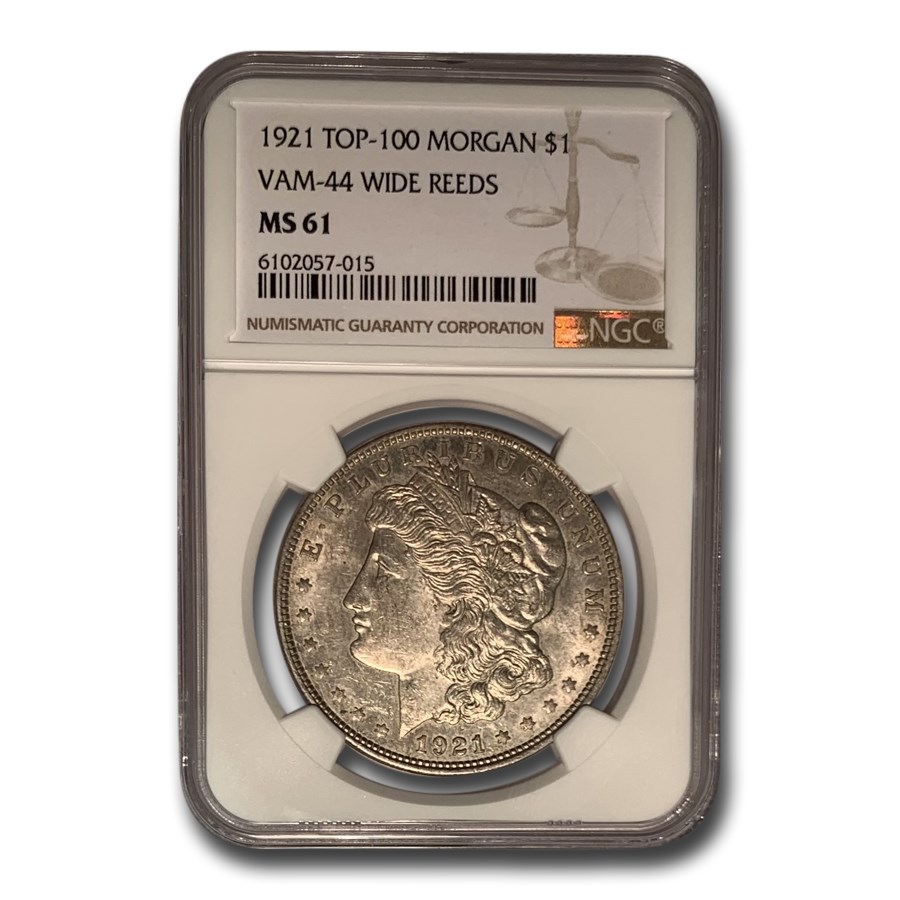
The VAM system identifies distinct anomalies and characteristics in the dies that strike Morgan (and later Peace) dollars. These varieties are determined by small changes or errors in the coin design, such as doubled die features, overdates, or misplaced mint marks.
In general, scarce Morgan VAMs are worth much more than regular coins. However, not all VAM varieties command a premium. The value of each variety depends on the rarity, the grade, and the specific characteristics. Collectors keen on U.S. Mint history or unique coin features are often willing to pay more for certified VAM Morgans.
Some of the most sought-after VAMs include the 1878-P 7/8 Tail Feathers, the 1879-P Reverse of 1878, and the 1887-P Doubled Ear.
VAM 1A Clashed E 1921 Morgan Silver Dollar
Clashed die errors occur when the obverse and reverse dies strike each other without a planchet in between, leaving impressions from one die on the other. When this happens, features from one side of the coin appear faintly on the other side.
On the obverse, you might spot traces of the eagle’s wing or wreath from the reverse side. These marks are usually found around the front of the neck of Liberty’s profile as a faint outline of the eagle’s wing.
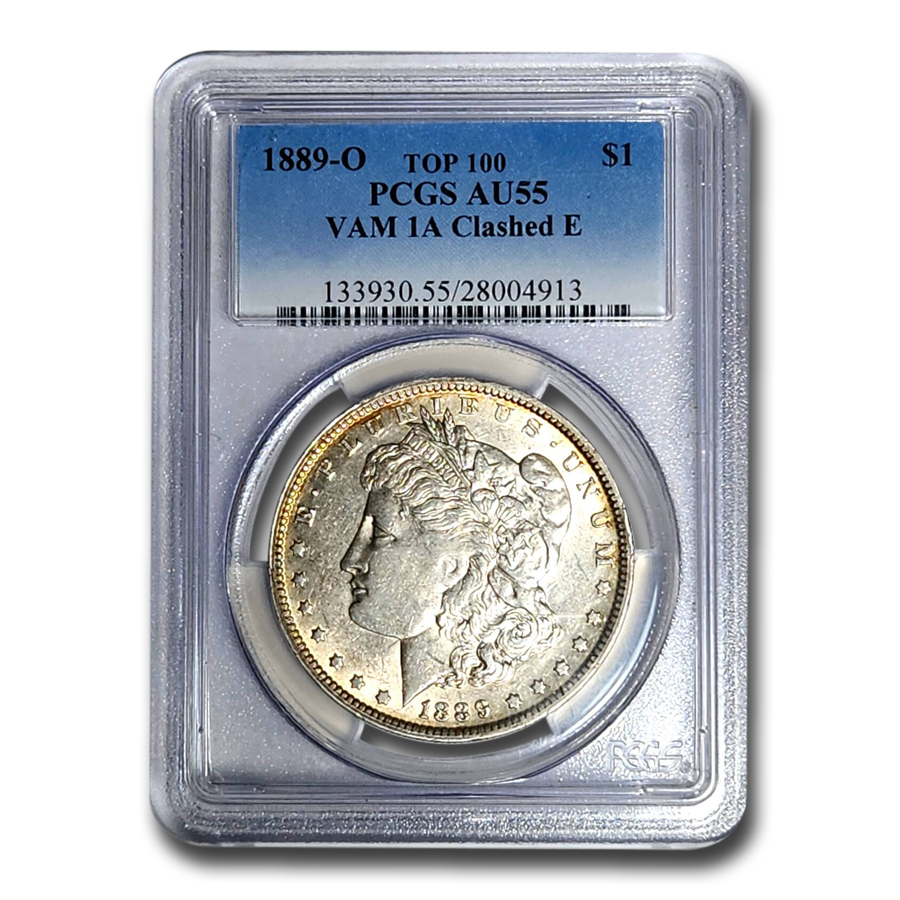
On the reverse, you may find remnants of Liberty’s portrait, including the outline of Liberty’s chin or nose near the eagle’s wings. Though these marks are generally subtler on the reverse, they are still noticeable upon closer inspection.
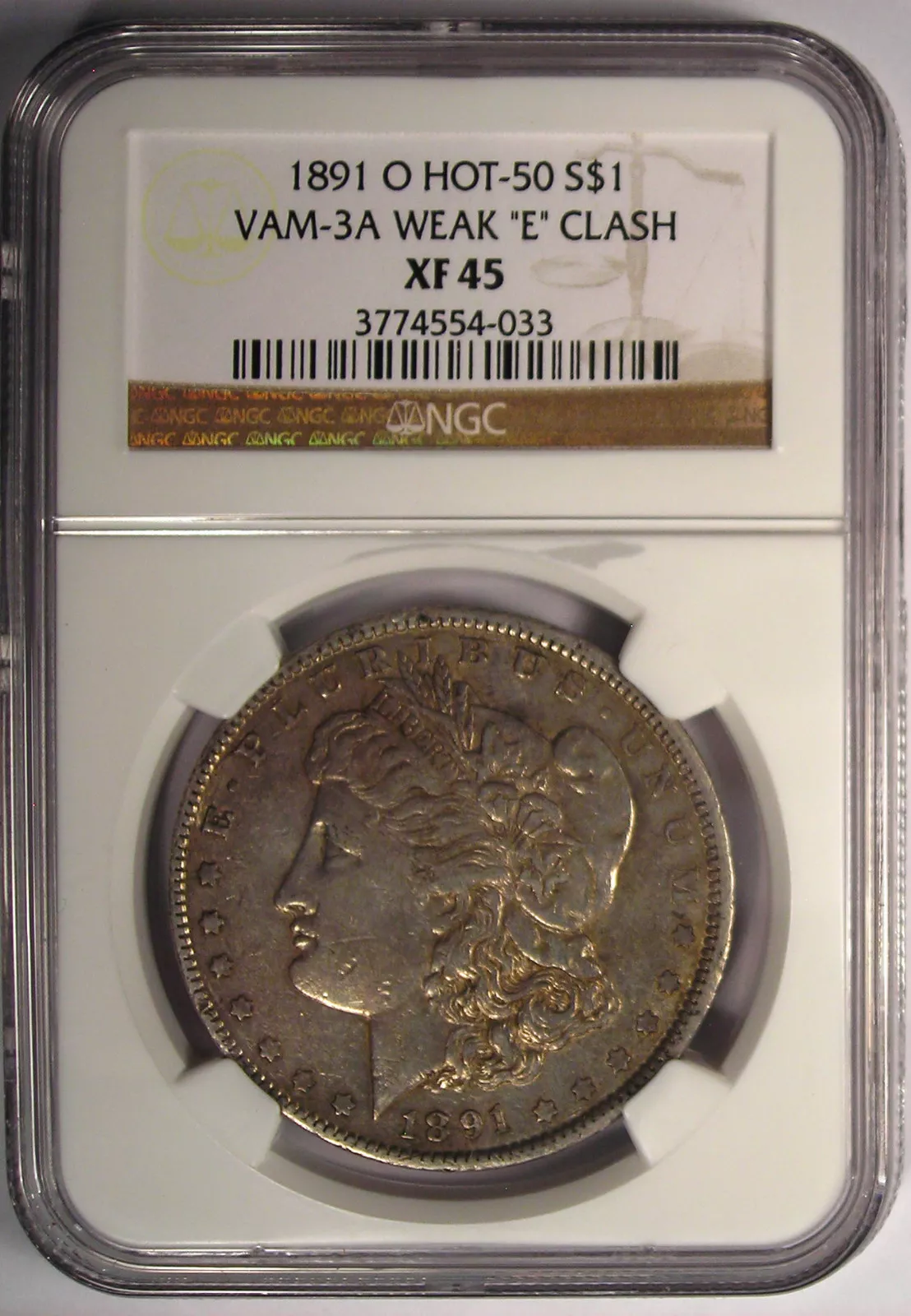
In some cases, parts of letters from one side of the coin may be transferred to the other, making for a highly collectible clashed die error. For example, fragments of the “E” from “E PLURIBUS UNUM” might appear on the reverse, or reverse lettering elements may appear on the obverse. Collectors particularly seek these lettering clashes.
1921 Off-Center Morgan Mint Error
Off-center strikes occur when the planchet is not correctly aligned between the dies during the striking process, resulting in an off-center design.
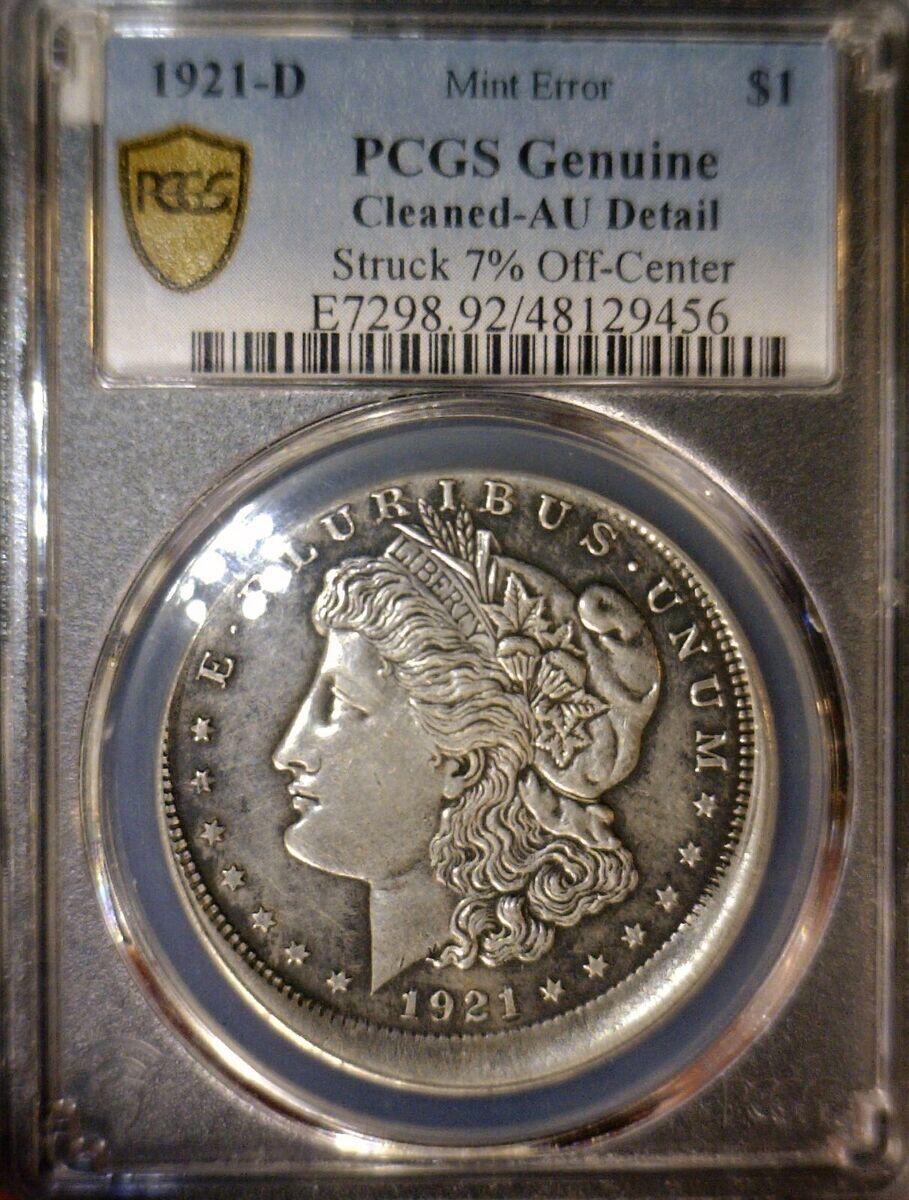
These errors can range from slightly off-center to dramatically misaligned, and they generally sell for thousands at auction.
Double Strikes
Double strikes occur when a coin is struck twice by the dies, creating a doubled or overlapping design. These errors are highly sought after for their distinctive appearance and rarity.
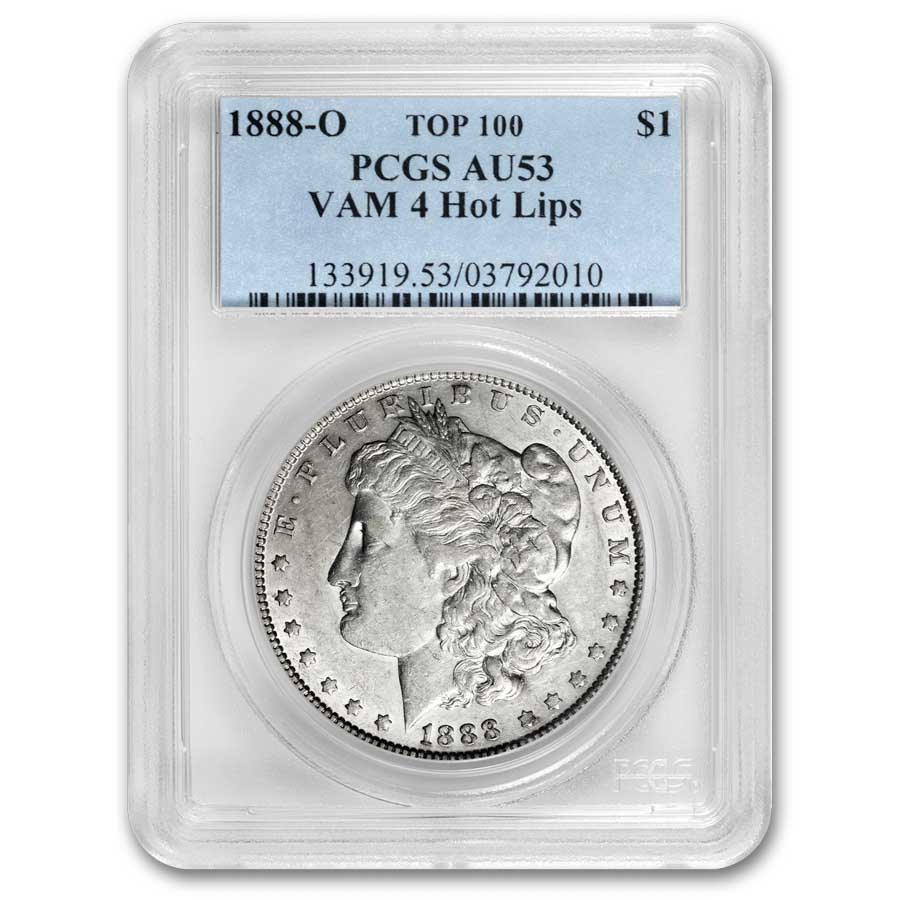
Die Breaks and Cuds
Die breaks and cuds are mint errors resulting from cracks or breaks in the die. These errors can create raised lines or blobs on the struck coins, adding a unique touch to your collection.
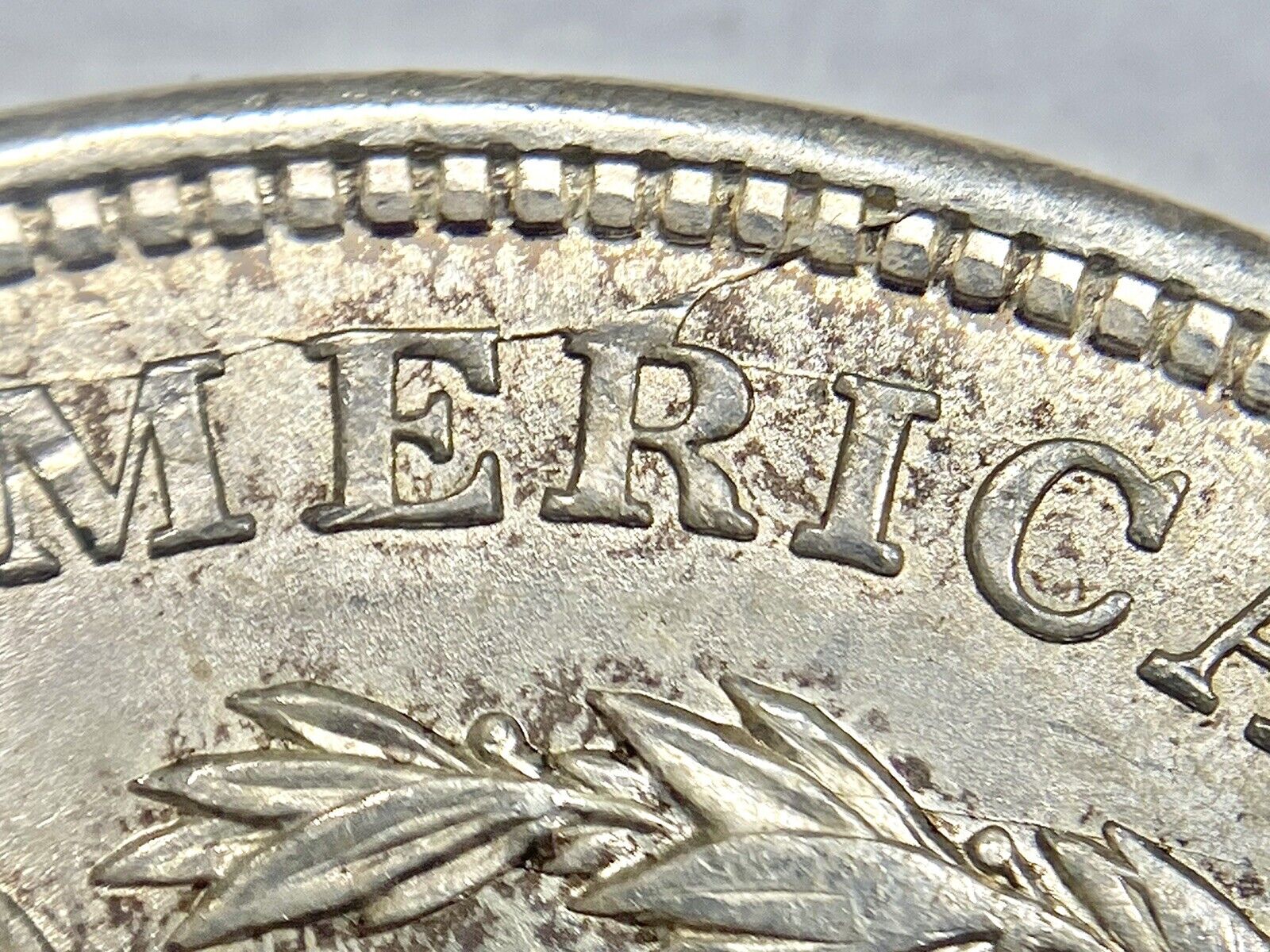
Morgan Dollar GSA Hoard
The Morgan GSA Hoard was an extensive collection of uncirculated coins discovered in U.S. government vaults in the 1960s and early 1970s. These coins were left over from production and were minted between 1878 and 1904 and later in 1921. The hoard is named after the General Services Administration (GSA), the federal agency responsible for cataloging and selling these coins to the public after they had been forgotten for many years.
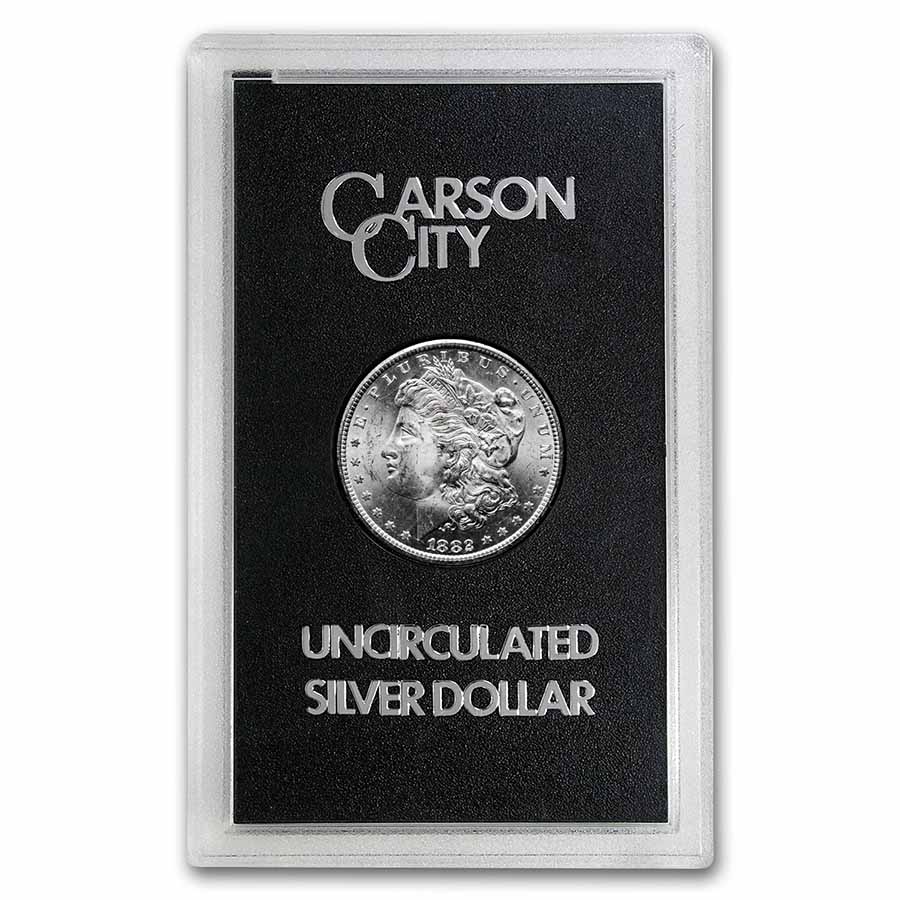
These coins were rediscovered during an audit of Treasury vaults in the 1960s. The GSA hoard largely contained coins from the Carson City Mint (CC), known for producing fewer Morgan dollars than other U.S. mints. Recognizing their numismatic value, the U.S. government held a series of public auctions from 1972 to 1980.
Many Morgans from the hoard were in mint-state condition. Their decades-long storage left them preserved in near-original condition, which is extremely rare for coins of this age.
The coins were auctioned in unique black plastic GSA holders. Keeping the coins in their original GSA packaging adds to their collectible value today.
